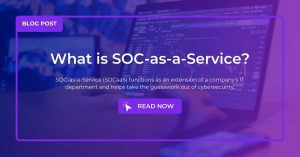
Cybercrime: A Modern Plague
News articles bearing bad news that another high-profile organization is at the mercy of ransomware have proliferated since the start of the pandemic. So much so that ransomware is now considered its own “pandemic.”
However, the Colonial Pipeline ransomware attack was the tipping point for the US government to act. Since that attack, several critical pieces of literature were published to help government entities and commercial organizations alike:
Basic Preventative Steps
Referencing the NIST Cybersecurity Framework (NISTIR 8374) that we linked above, let us review NIST’s “basic preventative steps” for improving your ransomware resistance and protecting against the constant threat of compromise. Keen readers will notice a considerable overlap from our recent Ransomware Checklist blog and the preventive steps discussed in NISTIR 8374.
1. Use Antivirus Software at All Times
- Set all software to scan emails and flash drives automatically.
2. Keep Computers Fully Patched
- Run scheduled checks to keep everything up to date.
3. Block Access to Ransomware Sites
- Use security products or services that block access to known ransomware sites.
4. Allow Only Authorized Apps
- Configure operating systems or use third-party software to allow only authorized applications on computers.
5. Restrict Personally Owned Devices
- On work networks, ensure only company-approved devices are connected and sharing.
6. Use Standard User Accounts
- Do not use administrative accounts whenever possible.
7. Avoid Using Personal Apps
- Personal email, chat, and social media should not be used from work computers.
8. Beware of Unknown Sources
- Do not open files or click on links from unknown sources unless you first run an antivirus scan or look at links carefully.
9. Make an Incident Recovery Plan
- Develop and implement an incident recovery plan with defined roles and strategies for decision-making. These strategies can be part of a continuity of operations plan.
10. Backup and Restore
- Carefully plan, implement, and test a data backup and restoration strategy—and secure and isolate backups of essential data.
11. Know Your Contacts
- Maintain an up-to-date list of internal and external contacts for ransomware attacks, including law enforcement.
Ransomware Protection as a Service
These resources from the government, especially the basic preventative guidance from NISTIR 8374 that we walked through above, provide critical information that organizations should adopt as a foundation for their security program if they want to stand a chance against ransomware. However, VPLS knows that not every organization has the time, skill, or workforce to implement these cybersecurity musts.
For these organizations, VPLS can take the burden off your IT department with convenient monthly or one-time services that check all the boxes above. We have a comprehensive suite of cybersecurity service offerings, such as SOC as a Service, Managed Firewalls, Backup & DR, Managed Servers, and vCISO Services. All these services can have your organization remediating any critical cybersecurity gaps while dramatically increasing your security posture in little to no time.

Read More from this Author


